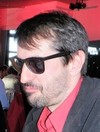Design of non-viral gene/drug delivery systems: input from live cell imaging studies
Chantal Pichon, Center for Molecular Biophysics, CNRS UPR4301 affiliated to University of Orléans, France.
Recent clinical trials of gene therapy unambiguously demonstrate the potentiality of this innovative therapy to cure diseases related to genetic disorders. Even though viral delivery systems remain the best vehicles to introduce genes into cells; there are some adverse events that raise serious safety concerns.
Therefore, clinical developments still require the use of alternative approaches of high safety, low immunogenicity and easy manufacture. Efforts have been carried out to design chemical gene delivery systems that incorporate viral-like features required for efficient cell transfection. Nucleic acids therapeutics are nanosized particles made of self-assembled nanometric complexes resulting from interactions between nucleic acids and chemical vectors. These nanosized particles are quite different to conventional drug delivery formulation.
To bypass the different intracellular barriers, these vectors bear devices assembled on the same multifunctional vehicle but have to work independently and sequentially. Hence, it is crucial to know the fate of chemical vectors and nucleic acids complexes once inside the cell in order to improve their design.
I will present during this lecture, how cell bio-imaging has helped us and others to improve the design of both chemical vectors and nucleic acids for gene delivery.
Confocal microscopy-based experiments including colocalization, FRAP/FRET/FLIM, videomicroscopy and single particle tracking have been widely exploited to either validate the improvement obtained or pinpoint some limitations.
Knowledge and understanding the intracellular processing and trafficking of nucleic acids/chemical vectors complexes are crucial if we intend to build artificial viruses for efficient gene therapy.
